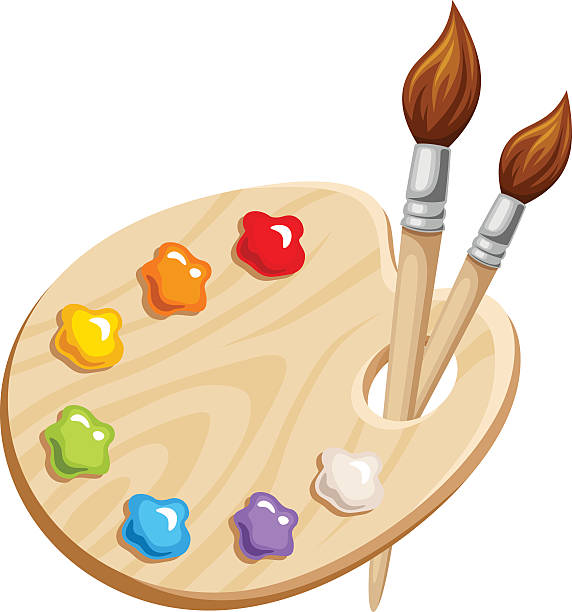1. Introduction: Exploring the Art of Watercolor Resist Painting Techniques
Watercolor resist painting is a technique that involves using materials to create areas in a painting where the watercolor paint will not adhere. This creates interesting effects and textures in the final piece. There are several different methods of watercolor resist painting, including using masking fluid, wax, or even salt. This blog will explore some of the most popular watercolor resist painting techniques and provide tips on how to achieve stunning results in your own artwork.
2. Understanding Watercolor Resist: Definitions and Fundamentals
Understanding the fundamentals of watercolor resist painting is essential for mastering this technique effectively. In this section, we will delve into the definitions of watercolor resist and the basic principles behind how different resist materials function on watercolor paper. By grasping these fundamental concepts, you will be better equipped to experiment with various resist techniques and unleash your creativity in your artwork. Stay tuned as we explore the intricacies of watercolor resist painting and discover how to elevate your creations to the next level.
3. Essential Materials for Watercolor Resist Techniques
To execute watercolor resist painting techniques successfully, it’s crucial to have the right materials at your disposal. Some key essentials include masking fluid, wax crayons, oil pastels, and even everyday household items like rubber cement or tape. These materials act as barriers that prevent the watercolor from adhering to certain areas on the paper, creating captivating patterns and textures in your artwork. In the upcoming sections, we will explore the properties of each material and how they can be effectively used to enhance your watercolor resist paintings. Stay tuned for valuable tips on selecting and utilizing these essential materials to elevate your artistic creations.
4. Step-by-Step Guide to Popular Resist Techniques
In this section, we will delve into a step-by-step guide on various popular resist techniques using the essential materials mentioned earlier. We will walk you through the process of applying masking fluid to create crisp white lines, using wax crayons or oil pastels to resist watercolor washes, and experimenting with household items like rubber cement or tape for unique effects. Each technique offers a distinct way to manipulate watercolor paints, adding depth and visual interest to your artwork. By following our detailed instructions and tips, you will be able to master these resist techniques and unleash your creativity with confidence. Stay tuned for a hands-on guide that will elevate your watercolor resist paintings to new heights.
5. Common Mistakes in Watercolor Resist Painting and How to Avoid Them
As you become more comfortable with watercolor resist techniques, it’s important to be aware of common mistakes that can hinder your artwork. One of the main pitfalls is not allowing the resist medium to fully dry before applying watercolor, leading to smudged lines or colors bleeding where they shouldn’t. Another mistake is using too much pressure when applying the resist medium, which can damage the paper surface or affect the final outcome. To avoid these errors, ensure proper drying time between layers, use a light hand when applying resist, and practice on a separate sheet before applying to your final piece. By being mindful of these common mistakes, you can enhance your watercolor resist paintings with precision and finesse. Stay tuned for more tips on perfecting your watercolor resist techniques.
6. Notable Artists and Their Contributions to Watercolor Resist Techniques
Many renowned artists have embraced watercolor resist techniques, showcasing their creativity and innovation in this medium. One such artist is Elizabeth Tolley, known for her intricate use of masking fluid to create stunning detailed effects in her watercolor paintings. Another notable figure is Frank Webb, who brings a bold and expressive approach to watercolor resist, blending various resist materials to achieve captivating textures and contrasts in his artworks. Exploring the works of these artists can provide valuable insights and inspiration for incorporating unique and personalized touches to your own watercolor resist pieces. Stay inspired by studying the techniques and styles of these masters as you continue to refine your skills in watercolor resist painting.
7. Conclusion: Elevating Your Watercolor Skills with Resist Techniques
Incorporating watercolor resist techniques into your artwork can truly elevate your skills and add a unique charm to your paintings. By studying the works of notable artists like Elizabeth Tolley and Frank Webb, you can gain valuable insights and inspiration to infuse creativity into your own pieces. Experimenting with different resist materials, such as masking fluid and wax, can create fascinating textures and patterns, enhancing the depth and visual interest of your watercolor artworks. Remember to practice patience and precision as you explore these techniques, allowing room for experimentation and growth in your artistic journey. With dedication and a passion for learning, you can master the art of watercolor resist painting and create stunning masterpieces that reflect your individual style and creativity.



